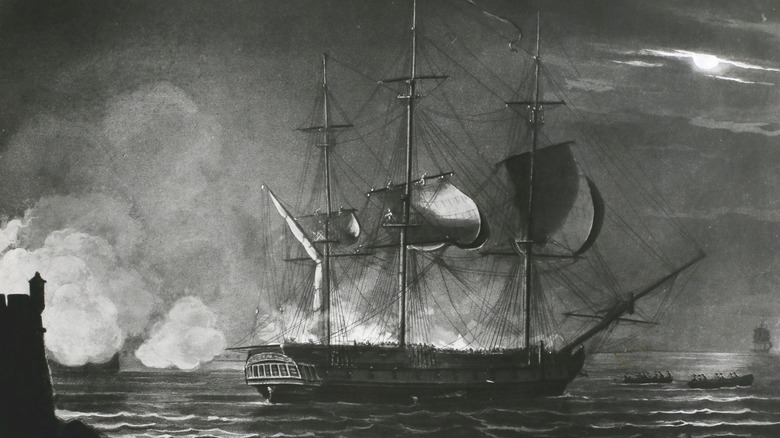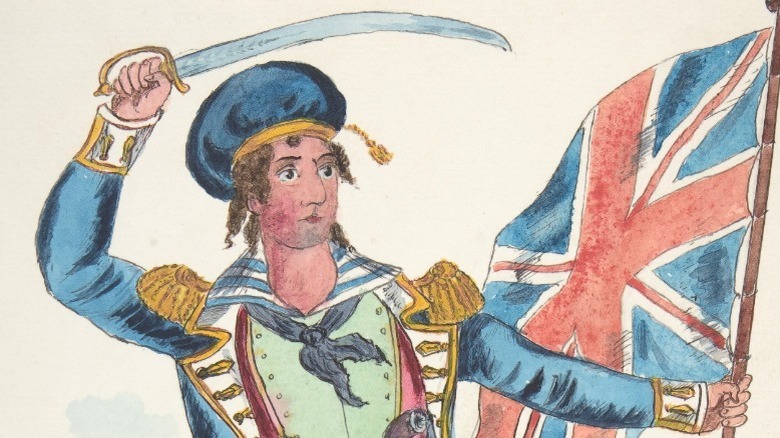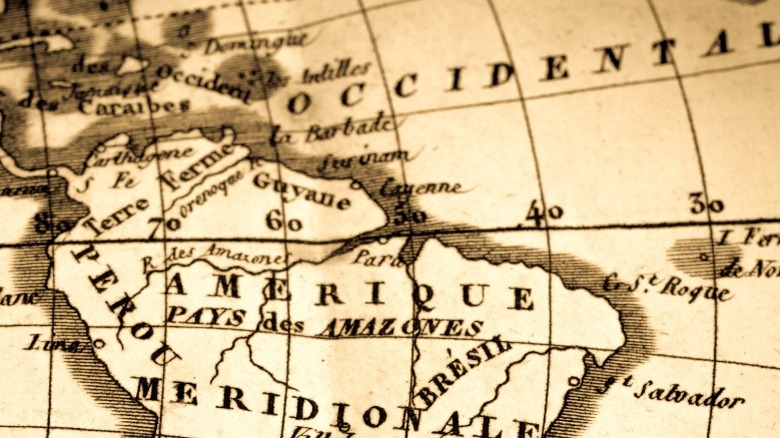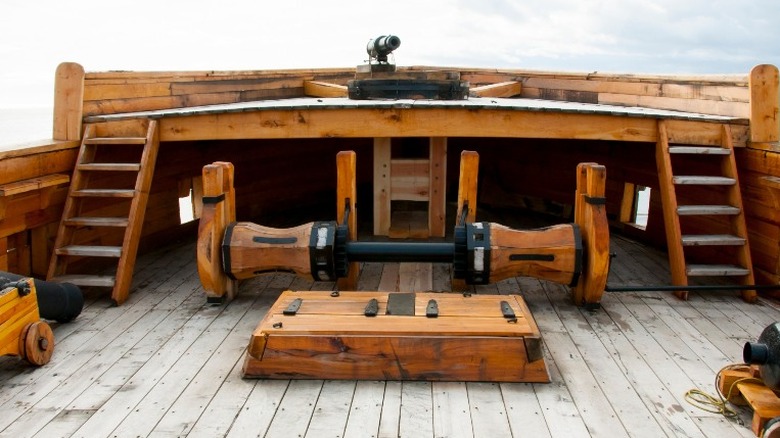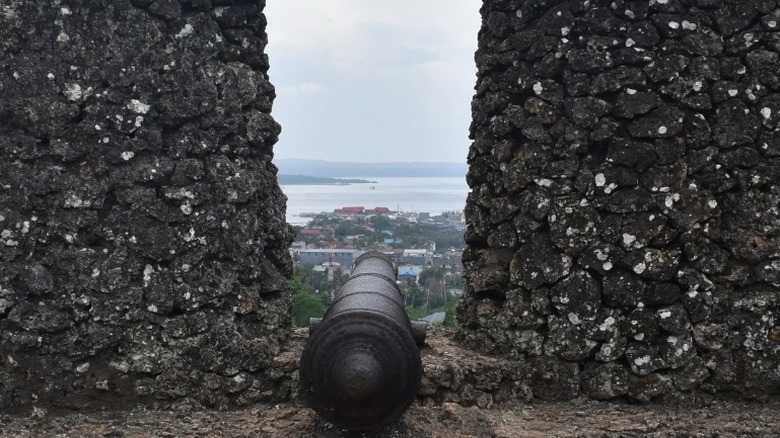The Bloodiest Mutiny In British Naval History
When many of us hear the word "mutiny," images of the notorious Captain Bligh and his adversary Fletcher Christian come to mind. With multiple successful films and a Broadway musical depicting this 18th-century incident at sea, the story of the mutiny on the HMS Bounty is a saga that has been taught by entertainers to several generations. And with legendary actors like Sir Anthony Hopkins, Trevor Howard, and Charles Laughton playing the antagonist in separate films opposite Mel Gibson, Marlon Brando, and Clark Gable, you might be able to expect that moviegoers have had this piece of history more influenced by Hollywood than they have by most history teachers.
The on-screen drama and depictions of a brutal mutiny might lead you to believe that this was the bloodiest mutiny in Britain's storied history at sea. However, it was another mutiny in the Caribbean Sea that happened a decade after the Bounty incident that truly claims the title of the most violent. It is the tale of the HMS Hermione, whose mutiny took it from trawling in British-controlled waters to being turned over to the Spanish Empire and back again.
Life at sea as a sailor with the Royal Navy in the 18th century
Though sailors weren't conspiring daily to overthrow the officers of the ships that they were hired or enlisted to work for, mutinies weren't a once-in-a-blue-moon event, either. Under the watchful (and oftentimes harsh) command of a British Royal Navy captain, a ship was typically run tightly and under absolute control. The reasons for this reality were plentiful, but mostly centered around keeping seamen in line so that the mission wouldn't be jeopardized under the dangerous conditions that life at sea had in store.
The crew of a ship was disciplined in ways that would be tantamount to torture in the modern era. Being whipped was a common punishment, the justification being each member of the crew had the lives of the others in their hands at all times. Violence inflicted on the crew by commanders was meant to instill order and organization via the infliction of pain and suffering for sometimes the most minor of offenses. For major offenses, being keelhauled, shot, or thrown overboard could be the punishment. Food, though not usually scarce, was barely fit for consumption. One historian quipped that life at sea in the 18th century was like being in prison, "with the added danger of drowning" (via BBC). The harsh conditions and severe punishments that crews faced would bubble up to the surface at times, with some extraordinary mutinies going down in the history books.
The crew had apparently had enough
History says that members of the Hermione crew became outraged at their captain's cruel punishments, which were sadistic and excessive, even by the standards of the day. A group of 30 from the ship's complement organized and launched a well-planned mutiny on the night of September 21, 1797. Drunken mutineers broke into Captain Hugh Pigot's quarters while he was sleeping and stabbed the officer to death. But they didn't stop there. Using any weapon they could find, those involved with the mutiny attacked other officers. It's reported that the slain were killed with swords and tomahawks.
With the ship now under the command of the mutineers, the remaining officers of the British Royal Navy on board the ship were dragged onto the top deck of the Hermione. They were subjected to a makeshift judge/jury comprised of the mutineers, who decided which ones were worthy of keeping alive and which ones should be put to death. Rather than execute the officers they found to be disposable, they tossed them overboard and let the sea take them.
The mutineers steer the ship to Spanish waters
With the ship under their command and now totally free of officers that they feared would overtake them, the mutineers set sail out of the Caribbean waters that would certainly harbor other Royal Navy ships that would give them trouble. Knowing that being caught would mean a death sentence, they set sail for friendlier waters. History reports that the crew headed toward La Guaira in what is now Venezuela. As this territory was controlled by the Spanish Empire at that time, the crew knew they had better chances there of evading capture and execution.
For their safety to be ensured, the crew had to have a good cover story. Rather than admit that they attacked and murdered the ship's command, they fabricated a story that included them rising against the harsh command and then marooning the captain and nine other officers in a lifeboat. The Spanish authorities promised political asylum for the crew in exchange for the ship that they had commandeered.
A suicide mission by the British recaptures the Hermione
Over time, word got back to the British that the HMS Hermione had been seized by members of its crew and given to the Spanish. British authorities were able to slowly capture some members of the mutinous crew throughout the next few years, though more than 100 were able to successfully elude authorities, remaining free and unpunished for their crimes against the Crown.
The Hermione sailed under the Spanish flag, though not without a name change. The London Gazette reported that the Spanish ship Santa Cecilia was under the flag and command of Spain and was being watched by members of the Royal Navy. While it was docked at Puerto Cabello, a British ship under the command of Captain Edward Hamilton, the Surprise, ventured close to the vessel formerly known as the Hermione (via Royal Museums Greenwich). Hamilton's forces boarded the Spanish boat, but not before being seen by members of the crew on board. Hamilton and two boats of sailors were able to force their way on board, fighting until the ship was under their control. Though Hamilton himself and several of his crew were seriously wounded, the British invaders suffered no deaths during this battle and took many Spanish sailors as prisoners.
The ship is renamed and returned to service in the Royal Navy
Sailing out of hostile waters with a crew of British naval forces, the Hermione was on its way back to being part of the Royal Navy once again. But the escape wasn't yet over. The Daily Mail, in its summary of a book about the events ("The Black Ship," by Dudley Pope), says that heavy fire from the Spanish-controlled shoreline fortresses was aimed at the ship as it was being steered out into the open sea. But it, and the daring British sailors who risked life and limb to recapture it, made it out of range of Spanish artillery fire.
Officially back under the command of the British Royal Navy, the ship that once sailed under the name Hermione was given a new one, taking to the high seas once again, sailing as the Retribution. As for Captain Hamilton, he survived his injuries incurred during the fight to recover the Hermione/Santa Cecilia/Retribution. He was later knighted upon his return to England.
